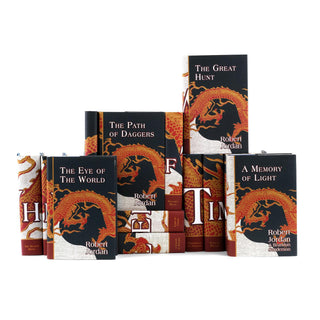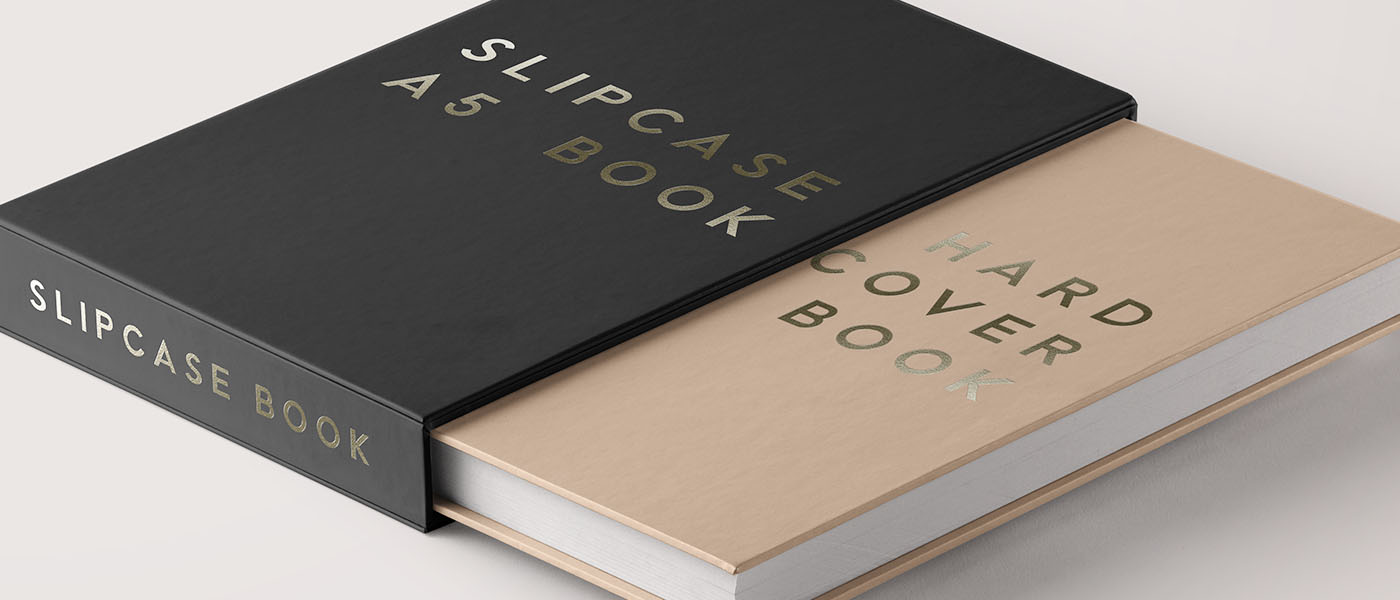Essential Hardcover Books for Every Genre Enthusiast
Wiki Article
A Comprehensive Overview to the Process of Hardcover Books Printing
When you commence the journey of hardcover publication printing, recognizing the whole procedure is essential. As you navigate with binding and top quality control, you'll find that every decision impacts the book's overall appeal.Understanding the Hardcover Book Structure
When you explore the world of hardcover books, you'll swiftly discover that their structure is distinctive and deliberate. The outer casing, usually made from durable cardboard, provides durability and defense. You'll discover a fabric or natural leather covering, which not just improves appearances however also includes to guide's longevity. Inside, the endpapers attach the cover to the text block, ensuring a smooth interchange.The message block itself is composed of multiple trademarks, or folded up sheets, sewn together for stamina. You'll see that the back is reinforced, enabling a smooth lay-flat analysis experience - hardcover books. In addition, guide's weight usually conveys a sense of top quality and durability
Hardcover books normally include a dust jacket, which offers as a marketing device while shielding the cover. Comprehending these aspects aids you appreciate the workmanship behind hardbound books and their special appeal in the literary globe.
Manuscript Prep Work and Editing
Obtaining your manuscript all set for printing is important, and it begins with proper format standards. You'll need to recognize the editing procedure to fine-tune your job and guarantee it resonates with viewers. Plus, grasping checking techniques can aid you catch those annoying errors prior to your book mosts likely to print.
Manuscript Formatting Standards
Proper manuscript format is vital for developing a professional-looking hardcover publication. Start by selecting a conventional typeface like Times New Roman or Arial in 12-point size. Usage double-spacing throughout the document to improve readability. Establish your margins to 1 inch on all sides, giving your text area to breathe. Number your pages in the leading right corner, and include your phase titles at the beginning of each new area. Use clear headings to suggest areas, and avoid too much format like bold or italics unless needed. Ensure to proofread your manuscript for consistency stylishly, making sure that everything from punctuation to spacing follows your selected guidelines. Complying with these actions will certainly set a strong structure for your publication.Editing Process Fundamentals
Modifying your manuscript is a necessary step that can change it from a harsh draft into a sleek last item. Bear in mind, modifying isn't just about repairing errors; it's about improving your voice and guaranteeing your message resonates with readers. Embrace the procedure, and you'll see your manuscript sparkle.Checking Methods Summary
Once you have actually polished your manuscript with editing, the next step is to ensure it's free of mistakes that might distract viewers. Beginning by relaxing after editing; fresh eyes capture mistakes better. Review your manuscript out loud-- this helps you listen to unpleasant phrasing and area typos. Use electronic tools like spell checkers for preliminary scans, yet do not rely exclusively on them. Consider printing your manuscript; analysis theoretically can disclose errors that screens miss out on. Emphasis on one kind of error each time, whether it's spelling or grammar, to stay clear of sensation overwhelmed. Employ a relied on pal or specialist proofreader to give a fresh perspective. Their feedback can highlight problems you may ignore.Designing guide Cover and Inside
When you're making your publication cover and inside, you'll intend to concentrate on vital style components that capture your audience's attention. Selecting the best typography styles and thoroughly choosing colors and imagery can make all the distinction in communicating your publication's motif. Allow's discover how these selections can raise your job and draw in visitors.Crucial Layout Components
Developing an appealing book cover and a properly designed interior is important for attracting viewers and improving their experience. Begin with the cover; it's your impression. Choose shades and photos that show your book's motif and mood. See to it your title stands out and is legible, also in thumbnail size.For the interior, concentrate on format and white area. A clean, organized layout helps viewers browse effortlessly. Take into consideration utilizing chapter headings and subheadings to lead them with the material. Aesthetic aspects, like graphics or images, can likewise enhance involvement however should match the message, not overwhelm it. Bear in mind, a cohesive style throughout your publication promotes a specialist look that can greatly affect a reader's choice to choose it up.
Picking Typography Styles
Typography plays a crucial duty in both the book cover and interior style, shaping exactly how visitors perceive your content. official site When picking typography styles, consider your publication's style and target audience. Believe regarding pecking order-- utilize different styles for headings and body message to guide readers easily via your job.Color and Imagery Selection
Choosing the right colors and imagery is crucial for capturing viewers' interest and sharing your publication's styles. Begin by considering your genre; vivid shades might work for a youngsters's book, while soft tones suit an enigma book. hardcover books. Usage images that reverberates with your material-- photos, images, or abstract styles can enhance your messageAssume regarding the emotions you intend to evoke. Cozy shades can produce exhilaration, while great colors often communicate peace. When developing the cover, ensure the imagery does not overwhelm the title and author's name; quality is essential. Inside, make use of consistent color design that match your typography. This natural approach not only boosts your book's aesthetic yet also enhances the reader's experience, making it a lot more memorable.
Choosing the Right Paper and Products
When picking paper and materials for your hardbound publication, it's important to ponder how they'll influence the overall look of your job. Begin by selecting the right paper weight; heavier supply often communicates high quality and toughness, while lighter paper can develop a more delicate touch. Think about the surface as well; glossy paper improves pictures and colors, while matte can supply an innovative, understated look.Towel, natural leather, or printed paper can set the tone for your publication. In addition, believe about the binding materials; making use of high-quality glue warranties your book lasts.
Ultimately, the selections you make below show your vision, so make the effort to sample various products (hardcover go to this web-site books). Your choices will help develop a book that's not just aesthetically enticing however also resilient and practical
The Printing Process: Techniques and Technologies
A selection of printing methods and technologies can bring your hardbound book to life, each offering unique benefits. Digital printing is a popular selection for short runs, enabling quick turn-around and economical solutions. When you require to print smaller sized quantities without giving up quality, it's excellent. On the other hand, balanced out printing master creating huge volumes, providing top quality and regular results. This technique is perfect for considerable publications where shade precision and fine details issue.For special impacts, you could consider methods like aluminum foil marking or embossing, which can add a lavish touch to your cover. Additionally, you can choose for numerous inks, consisting of environment-friendly alternatives that deal with ecologically aware visitors. Comprehending these techniques assists you make educated decisions, guaranteeing your hardbound publication not only looks excellent but likewise fulfills your manufacturing needs properly. Choose the ideal strategy to boost your publication's charm and effect.
Binding Approaches for Hardbound Books
Numerous binding methods can change your hardbound book into a attractive and long lasting item. One prominent more helpful hints option is the situation binding technique, where the pages are stitched and then affixed to a tight cover. This supplies outstanding resilience and a professional appearance. Another approach is the best binding, which uses adhesive to hold the pages with each other, permitting a sleek spinal column but much less resilience contrasted to situation binding.You could likewise consider spiral binding, which enables your publication to lay flat, making it suitable for guidebooks or workbooks. However, it doesn't supply the same protective cover as situation binding. There's the saddle stitch technique, appropriate for smaller sized publications, where sheets are folded and stapled together. Each binding technique has its benefits and fits various needs, so consider your publication's objective and audience when selecting the most effective option for your job.
Top Quality Control and Last Touches
After picking the right binding approach for your hardbound publication, top quality control comes to be vital to confirm your end product meets your assumptions. Beginning by inspecting the published web pages for any kind of mistakes or variances in shade and design. You don't wish to miss out on any type of typos or misprints that might affect your viewers' experience.Next, inspect the binding integrity. Confirm the pages are firmly attached which the spine is durable. A well-bound book not just looks specialist however likewise feels durable in your hands.
In addition, take notice of the cover. Try to find any scuff marks or misalignments in the art work. If you've gone with unique surfaces like embossing or foil marking, make certain they're applied consistently throughout all copies.
Ultimately, carry out a detailed examination of the entire set before transferring to circulation. By doing this, you can validate that every book mirrors your high requirements.
Frequently Asked Inquiries
For how long Does the Hardbound Book Printing Refine Normally Take?

What Is the Minimum Order Quantity for Hardcover Books?
The minimum order quantity for hardcover books generally begin around 100 duplicates, but it can vary based on the printer. You should contact your picked printing solution for their details needs and rates.
Can I Print Hardbound Books in Custom-made Sizes?
Yes, you can publish hardcover books in customized sizes. Lots of printing solutions supply adaptability with dimensions, allowing you to select a style that fits your job. Simply verify the requirements before putting your order.
Are There Eco-Friendly Options for Hardcover Book Printing?
Yes, you can discover green alternatives for hardbound publication printing. Lots of firms make use of lasting inks and recycled materials. Just ask your printer about their green practices to guarantee your project aligns with your environmental worths.What Are the Prices Linked With Hardcover Book Printing?
When taking into consideration hardbound book printing prices, you'll require to consider products, style, and printing methods. Added costs like shipping and binding can also impact your overall budget, so plan accordingly for your project.When you begin the trip of hardcover book printing, understanding the whole procedure is important.A selection of printing techniques and technologies can bring your hardbound book to life, each offering one-of-a-kind benefits. Exactly how Long Does the Hardbound Publication Printing Refine Generally Take?
The hardcover book printing process normally takes about 2 to 6 weeks.Yes, you can locate eco-friendly options for hardbound book printing.
Report this wiki page